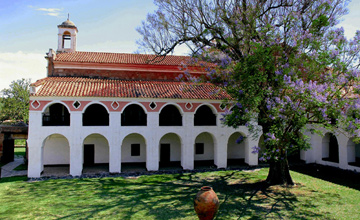Estancia de Jesús María lies just four kilometers north of Estancia de La Caroya, always following National Route 9 in the Province of Córdoba. Its location is not accidental. The Royal Road to the capital of the viceroyalty used to go through this area. The City of Jesús María developed in these lands. In 1618, the Jesuits acquired the twenty thousand grape varieties, the mill, 250 cows, 25 oxen and 30 pigs of the land then known as Chacra de Guanusacate -a name given by the Sanaviron natives- for eight thousand Pesos. By 1620, when it had already been given its present Christian name, this second productive undertaking of the Company of Jesus would concentrate salaried natives and approximately three hundred slaves who had been bought at the port of Buenos Aires and were in charge of the heaviest tasks. As it was to be expected, Latin, Spanish and Italian, as well as native American and African tongues were spoken at the estate.
Estancia Jesuítica de Jesús María
Half monastery and half merchants association, the barracks occupied by the natives and the slaves slowly changed into constructions made of brick, stone and tiles, typical of the Order. The central yard is enclosed by a two-story cloisters section. The ample galleries and the semi-circular arches complete the typical style of the Company.
Pablo Etchevers
Marcelo Sola










